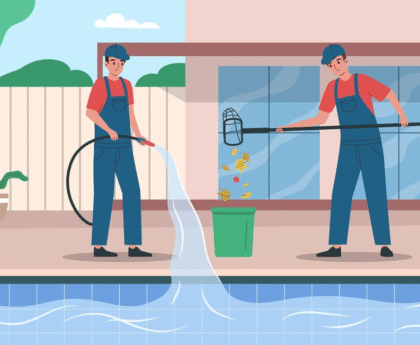Plank siding is a popular choice for many homeowners, offering a classic and timeless look that can enhance the curb appeal of a home. However, like any building material, plank siding requires regular maintenance and occasional repairs to ensure it continues to perform at its best. In this article, we’ll explore the key steps for maintaining and repairing plank siding, including the importance of residential roofing services and the role of siding.
Table of Contents
Cleaning and Inspecting Plank Siding
Regular cleaning and inspection of your plank siding is essential for maintaining its appearance and preventing damage. Use a soft-bristle brush and a mild detergent to gently clean the siding, removing any dirt, mildew, or other buildup. Inspect the siding for any cracks, warping, or other signs of wear, and address any issues promptly.
Residential Roofing Services
The residential roofing services refer to the professional installation, repair, and maintenance of roofs on residential properties. These services are essential for protecting the overall integrity of a home, including the siding, and ensuring that the roof continues to perform at its best. When considering plank siding maintenance and repair, it’s important to also consider the condition of the roof and work with a reputable residential roofing contractor.
Repairing Damaged Plank Siding
If you notice any cracks, warping, or other damage to your plank siding, it’s important to address the issue promptly. Depending on the extent of the damage, you may be able to repair the siding yourself or may need to hire a professional siding contractor.
Siding
Siding refers to the exterior cladding material used to cover the walls of a building. Plank siding is just one type of siding, but there are many other options available, including vinyl, fiber cement, and wood. The type of siding you choose can have a significant impact on the overall appearance, durability, and maintenance requirements of your home.
Replacing Damaged Plank Siding
In some cases, the damage to your plank siding may be too extensive to repair, and you may need to replace the affected boards. When replacing plank siding, it’s important to match the new boards as closely as possible to the existing siding, both in terms of color and texture.
Painting and Staining Plank Siding
Over time, the paint or stain on your plank siding may begin to fade or peel. Repainting or restaining the siding can help to restore its appearance and protect the underlying wood from weathering and decay.
Addressing Moisture Issues
Moisture is one of the primary enemies of plank siding, as it can lead to the growth of mold, mildew, and rot. If you notice any signs of moisture damage, such as warping or discoloration, it’s important to address the issue promptly to prevent further damage.
Maintaining Sealants and Caulking
The sealants and caulking used around windows, doors, and other openings in your plank siding are essential for preventing water intrusion and maintaining the integrity of the siding. Regularly inspecting and replacing these sealants and caulking can help to extend the life of your plank siding.
Conclusion
Maintaining and repairing plank siding is an essential part of keeping your home in top condition. By regularly cleaning and inspecting the siding, addressing any damage promptly, and maintaining the paint or stain, you can help to ensure that your plank siding continues to look great and perform well for years to come.




